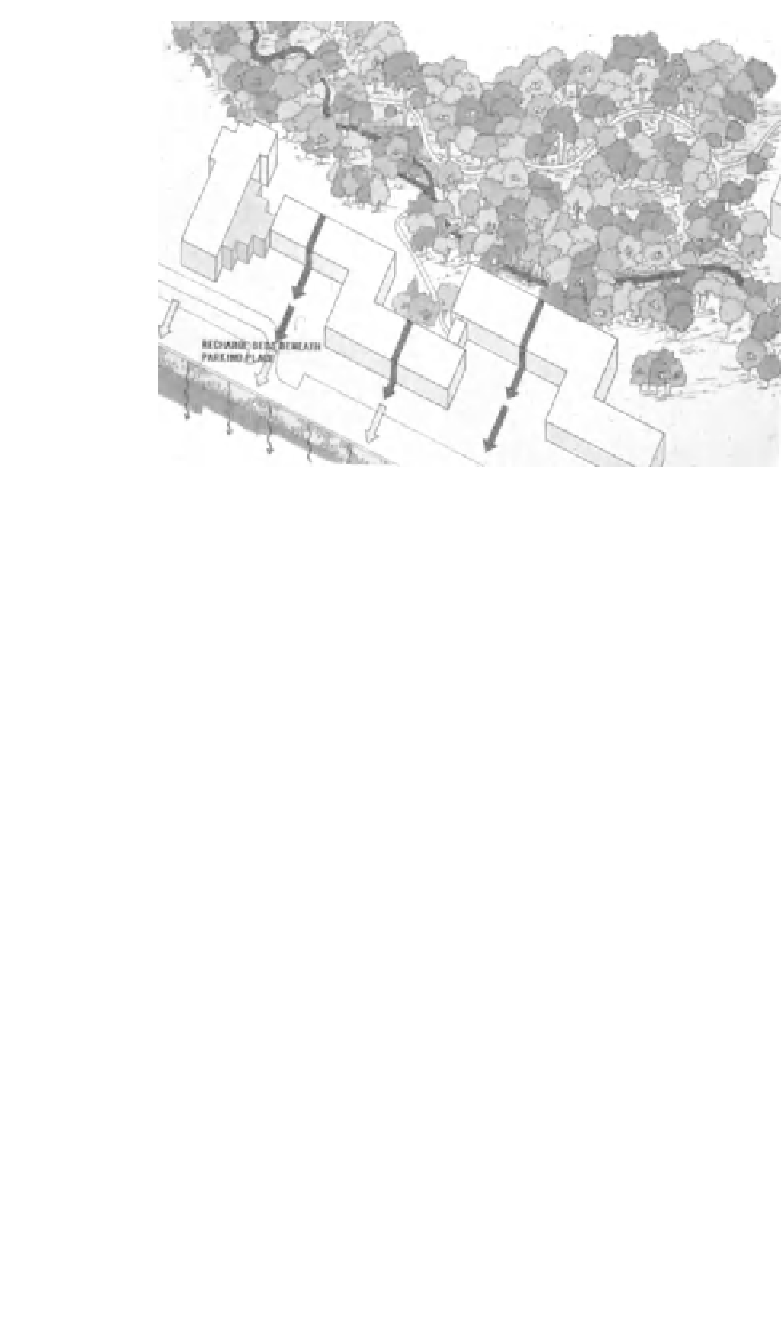Environmental Engineering Reference
In-Depth Information
Figure B-27
Roof runoff conveyed to infiltration beds, wooded area preserved.
runoff from several large office buildings (Figure B-27). Review and approval
by county government was cautious at the time, based on a lack of experience
with recharge designs. However, six months after construction, hurricane Gloria
dropped 6 in. of rain on the site within 16 hours (Figure B-28). The performance
of the system and the fact that no overflows occurred and no increase in stream
flow resulted provided an excellent demonstration of both the use of porous
pavements and the infiltration of rainfall as the best way to prevent runoff
impacts (Figure B-29).
Clinical Laboratory Complex, SmithKline Beecham
(now GlaxoSmithKline), Valley Forge Business Center,
Montgomery County, PA (1987)
Shortly after completing an evaluation of SmithKline Beecham's animal
health products headquarters complex at Applebrook, Chester County, Cahill
Associates and Andropogon Associates were asked to design a new site to
serve a $17 million, 135,000-square foot clinical laboratory. Water resource
concerns posed the most serious constraint, given the location and sensitivity
of the surrounding woodlands. Cahill designed a terraced set of parking bays
with porous AC pavement, underlain with stone infiltration beds, which could
infiltrate the 2-year frequency rainfall from the full site and mitigate greater
storms that would overflow to the nearby stream (Figure B-30). This allowed
Andropogon to save a mature oak-beech forest and create an enclave for the
office-laboratory complex. Included were re-created wetlands and innovative










Search WWH ::

Custom Search